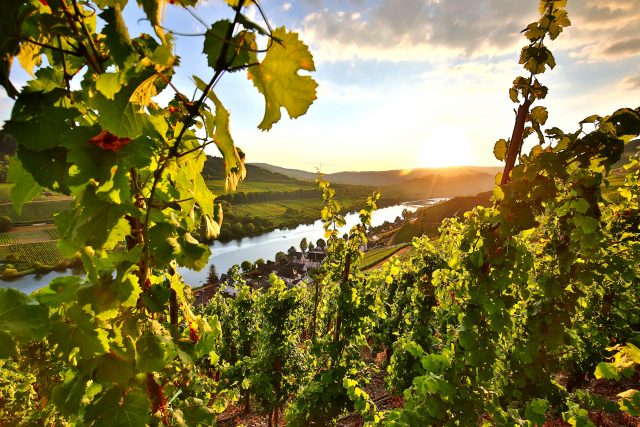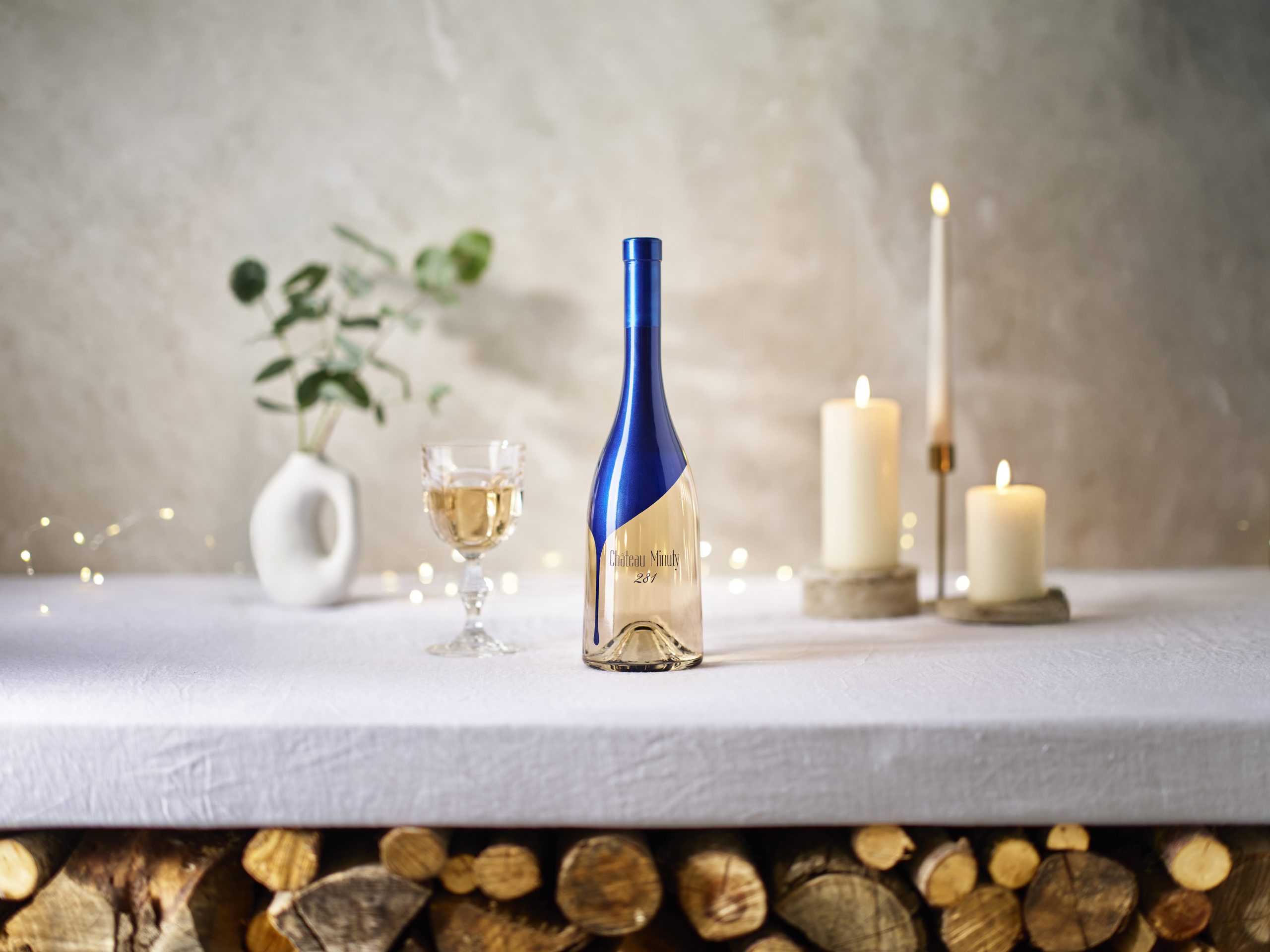Mosel 2021 is “a vintage that brings a lot of joy”, Prüm winemaker says
After a summer when drought, heat and wildfires have brought the subject of climate change to the front of everyone’s minds, tasting the 2021 Mosel vintage seems all the more remarkable: a cool throwback to an bygone era of high acidity and steely, taut wines that may challenge when young, but will reward patient cellaring.

“It’s a special vintage that I’m happy to show at this time,” says Dr Katharina Prüm, winemaker at Weingut Joh. Jos. Prüm, the Wehlen-based house famed for the purity and longevity of its elegant, pin-sharp Rieslings, such as Graacher Himmelreich, Wehlener Sonnenuhr and Zeltinger Sonnenuhr.
“It reminded us of old times, like the 1980s, with a later harvest, rainy times and a cool year below the long-term average. The style of the wines is a consequence of the weather conditions: very high acidity, but not too high. People who love Mosel Riesling usually love acidity, so it’s a vintage that brings a lot of joy.”
The bare facts illustrate the nature of the year: temperatures in April, May, July and August were all below the long-term average, and picking started on 11 October – more than three weeks later than in 2020. Most grapes only achieved Kabinett or Spätlese levels of concentration, and quantities were much reduced on 2020 or 2018.
JJ Prüm’s classic Mosel Rieslings are low-ABV at the best of times; in a cool, late-ripening vintage like 2021, this feature is accentuated, with 7.5% ABV not uncommon. This highlights even more the fine, ethereal nature of the wines, which favour elegance over opulence, but have an understated intensity that will see them last for decades.
For Dr Prüm, the Kabinetts of 2021 are refreshing and delicate, the Spätleses show higher ripeness and more fruit, and the Ausleses have a crisp purity. The only downside? A dearth of botrytis meant that this was not a year for BA or TBA wines.
The subject of sweetness prompts Dr Prüm to voice her frustration at the way in which some people still regard these wines. “They are not sweet; they are off-dry,” she insists. “We always try to teach people about the problem or challenge that there are only these two categories of dry or sweet wines in many people’s minds.
“Some restaurants put these wines in the ‘dry’ section of the list, which makes sense in my mind. Auslese in its complexity is a very refreshing wine, not a sweet wine.”
Such an idiosyncratic year makes comparisons with recent vintages problematic. Dr Prüm puts forward 1998 and 2004, but acknowledges that she hasn’t seen anything like it “in my professional lifetime” (from 2003).
“Every year is a challenge in a different way,” she continues. “At harvest time [in 2021] there were quite uneven ripeness levels, so we had to revisit most of the parcels two, three, even four times. We needed to really judge and look at each grape to decide if it’s the right time to pick.”
But, says Dr Prüm, this is nothing new. “It’s a challenge every year to find the right time for each parcel, and it’s different every year. We have all these parcels, we visit them each day, and it’s kind of a puzzle that we have to solve.
Partner Content
“But I am really happy – I could not have wished for better than this. The wines are more closed than in previous years at this stage, but in the ‘70s or ‘80s this would be a ripe vintage. Would I like to have it every year? No, we are super-happy to have the different characters of each vintage.”
That raises the subject of 2022, with early signs that, like 2020, it will be a warmer year – as well as very dry – and more in tune with recent trends than its predecessor. If Dr Prüm is concerned about the long-term effects of climate change, she is equally confident in the resilience of Riesling, and of the vineyards.
“My father [Dr Manfred Prüm] took over the estate in 1969,” Dr Prüm says. “When he first tasted the 2020 wines, he was very surprised by the character, because they were much more classic and not as rich as he expected. We are learning to deal with higher temperatures.
“In the past, the practice was to harvest as late as possible, even to take risks and lose grapes to achieve ripeness. That has now changed – we cannot just say the later the better. We have to watch and be more selective, but grape vines have this ability to deal with extremes, where other plants wouldn’t make it.”
SELECTED TASTING NOTES
JJ Prüm Graacher Himmelreich Kabinett 2021
A taut and linear Kabinett, but showing hints of seductive intensity with scented lime and more weighty stone fruit on the palate. Beautifully elegant and poised, but also broad and surprisingly generous.
JJ Prüm Zeltinger Sonnenuhr Spätlese 2021
In this tight, classic vintage, this is surprisingly forward and approachable, displaying perfumed stone fruit edged with honeysuckle. The floral aromas give the wine an ethereal elegance, while the fruit offers immediacy and charm.
JJ Prüm Wehlener Sonnenuhr Spätlese 2021
Shy on the nose after the (relative) exuberance of the Zeltinger, with green fruit cloaked in gunflint. Austerity slowly dissolves to reveal a wine of real weight and texture, offering velvet breadth in the mouth. A baby.
JJ Prüm Graacher Himmelreich Auslese 2021
Character and power here, from the lean but aromatic green fruit to the edge of savoury smoke. Sumptuous by the standards of the year, showing fruit that is full in its ripeness and texture, with a beautiful green apple finish.
JJ Prüm Wehlener Sonnenuhr Auslese 2021
Marrying rainwater freshness with scents of apple skin, grapefruit and lime, this is perfectly poised in its steely linearity. There’s honeysuckle too and a sense of weight and texture, plus complete harmony between sweetness and acidity.
JJ Prüm Bernkasteler Lay Auslese 1998
After more than 20 years, the fruit has softened into a creamy, barley sugar-scented roundness, but has lost little vibrancy. Just as it edges into tropical, almost overripe territory, a lean, fresh finish takes over. Age brings intensity without sacrificing balance or character.
Related news
Castel Group leadership coup escalates
For the twelfth day of Christmas...
Zuccardi Valle de Uco: textured, unique and revolutionary wines




